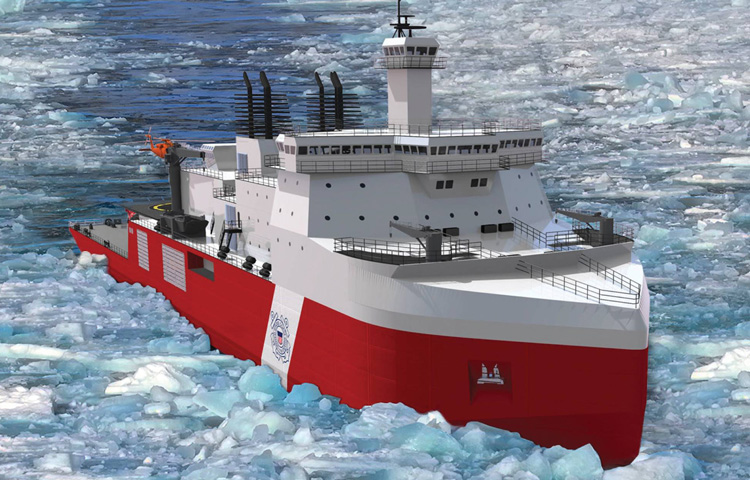The U.S., Canada and Finland on Thursday said they plan to collaborate on the production of polar icebreakers to help meet their respective economic and security needs.
For the U.S., cooperation with two other nations that have vast more experience in constructing medium and heavy icebreakers could be important given current struggles to build the first new polar icebreaker in decades.
The “value proposition” for the U.S., a senior Biden administration official said on Wednesday, is “to bring world class expertise and experience to our shipyards. That helps them attract demand, scale up their capacity and compete on the world stage. As the President has emphasized, we’re committed to revitalizing our capacity to build American ships in American shipyards with American sailors.”
A formal memorandum of understanding is expected to be signed by the end of 2024 to launch the “Ice Pact,” the official said on Wednesday during a virtual background briefing for media ahead of the announcement.
The pact has three components, the first being the sharing information on polar icebreaker production and related Arctic capabilities, the official said.
Such enhanced information sharing would seem to benefit the U.S. the most. Bollinger Shipyards, by virtue of its acquisition last year of Halter Marine, is three years behind in starting construction of the Coast Guard’s polar security cutter (PSC), which remains in the detailed design phase. The Coast Guard attributes the delays to several factors, including supply chain and labor issues that arose during the COVID 19 pandemic, and because it has been nearly five decades since a U.S. shipyard has designed and built a heavy icebreaker, which are comprised of complex hull structures.
Finland is a world leader in icebreaker design and construction while Canada maintains a fleet of heavy, medium, and light icebreakers and is preparing to build a new Arctic fleet.
“So, we intend to scale up our capacity using the expertise and the know-how from Finland and Canada,” the official said. Current and planned U.S. investments in polar icebreakers combined with expectations for interoperability between the ships of the three countries will incentivize Canadian and Finnish companies to invest in U.S. shipyards, the official added.
The PSC would be the first U.S. heavy icebreaker since the Polar Sea—which is out of service—was commissioned in 1977. The Polar Star, the Coast Guard’s lone operating heavy ice breaker, was commissioned in 1976 and is typically used to break ice in Antarctica in support of an annual resupply mission for a U.S. scientific outpost. The Polar Star undergoes a phased service life extension every year following its icebreaking mission to keep it operational.
The Coast Guard also operates the Healy, a medium polar icebreaker that was commissioned in 1999 and typically operates in the Arctic region several months each summer. The service also plans to acquire a commercially available icebreaker to meet its short-term icebreaking needs.
The second component of the Ice Pact involves workforce development and will enable workers to train in shipyards across the three countries.
Finally, the trilateral arrangement hopes to gather interest from allies and partners to acquire polar icebreakers from shipyards in the three countries.
“Polar icebreakers are exactly the kind of high-complexity, high-tech market segment in which America is well positioned to thrive and lead, particularly with added expertise and technology,” the official said. “And this will help build out our industrial capacity [and] also provide benefits to our allies.”
President Joe Biden, Canadian Prime Minister Justin Trudeau, and Finland President Alexander Stubb announced their intent to form the Ice Pact during the NATO Summit in Washington, D.C. In addition to bolstering allied economic and national security, the announcement signals to Russia and China that NATO countries will strengthen their “competitive edge” in key industries such as “shipbuilding to build a world class polar icebreaking fleet at scale,” and use that fleet in “the polar regions to enforce international norms and treaties that promote peace and prosperity in the Arctic and the Antarctic,” the senior administration official said.
Russia operates more than 40 icebreakers and China, which has two icebreakers and a third in construction, calls itself as a near-Arctic state.
The Coast Guard is currently planning to acquire at least three PSCs and potentially more. The service is also interested in a new fleet of medium icebreakers.
The administration official did not provide an update on U.S. icebreaker plans, timelines, or numbers beyond saying it could cost “$10 billion to fully deploy the fleet that we want,” adding that “we intend to scale up by multiples of the current amount as soon as we can.”
